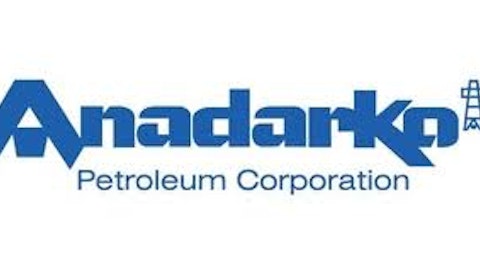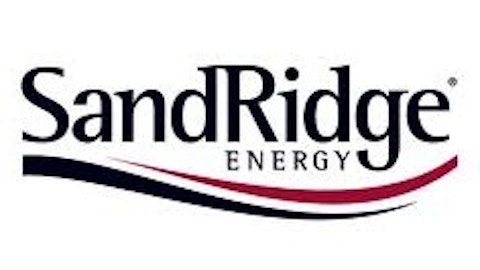
In this case I’m discussing Appalachia. That area of the country that’s mountainous and just past the first wave of large cities on the east coast. Parts of Pennsylvania, Maryland, West Virginia and Ohio are all getting their own little boomlet based on the natural gas fields being opened up by new technologies and methods of extraction. Having gone to school in the Maryland panhandle and lived for years in rural southeastern Ohio, I’m happy for them.
It’s the Utica Shale that’s making rural Ohio bloom. Jobs in extraction and drilling are climbing in the region by more than 20%. Yes, there are concerns about fracking and such. Sometimes large ones. But your job as an investor is to look at the lay of the land and see where you can go to make some value for your portfolio. Right now the companies both getting the natural gas out and those transporting it are good plays. You’d do well to pay attention to this mostly ignored section of the country.
Gulfport Energy Corporation (NASDAQ:GPOR)
A long way from the gulf, Gulfport is doing exploration and production work in the natural gas fields of Appalachia. It also has space up in the Alberta oil sands and is wrapped up in the KeystoneXL pipeline project as well as others around the world. There’s no dividend out of Gulfport, and that makes me sad. However, shares have been on a run since July, climbing more than 140% in that time. This isn’t a noisy firm like some but is a grower that you should pay attention to.
Markwest Energy Partners LP (NYSE:MWE)
Markwest is in the business of getting the gas from the wells to the market. The company does oil, as well. There’s already one Markwest facility operating in Cadiz, OH and more could be coming. This is a firm set to profit no matter which wells pay off. It offers a great dividend at 5.73%. Heck, that’s better than great. But the stock itself has been on a roller coaster. It’s down for the last 12 months at least in part to the firm’s habit of making those large cash distributions. But there are still people thinking it’s going places. A P/E of 124.73 implies that there’s faith in the markets that the value isn’t all realized.
Chesapeake Energy Corporation (NYSE:CHK)
Chesapeake Energy locates and pulls energy resources from the ground. It’s pretty good at it, too. Unfortunately, the company has been locked in a distracting battle in which superstar investor Carl Icahn is involved. Just last week he managed to take control of the board and remove controversial president Aubrey McClendon. Shares are up on the news but that may be a short-term thing. For the year they’re down about 20%, and a negative EPS doesn’t really encourage investment. Take a hard look at Chesapeake and decide whether you have faith in Icahn before you get too involved.
Caiman Energy
Caiman is owned by Williams Partners (NYSE:WPZ) and is in the storage and transportation business. Another firm that will profit when the gas is pulled out of the ground, Caiman has been positioning itself in Appalachia for just that. Williams is another firm that continually undercuts its share price by making large cash distributions to its shareholders. The yield right now is a very cheerful 6.27%. But that makes this a stock you don’t hold for growth, you hold it for the income. Which isn’t to say it hasn’t grown since the crash. It just hasn’t grown in the last year. A P/E of 20.53 shows there’s still some expectation among investors that there’s value to be had.
Hess Corp. (NYSE:HES)
Easily the most known name on this list for the casual investor, Hess runs gas stations and convenience stores around the country. Still, the firm is also involved in natural gas, at least for the moment. I hedge that a bit because, while the firm is indeed involved in the Appalachian gas boom, there’s news that a major shareholder is pushing for the firm to get out of the business and uncertainty is hanging over it. If you invest in Hess, make it for other reasons, not for its interest in Utica shale. The firm’s stock has climbed since last June from $39.99 to $67.42 so it’s done well. But the dividend is small at 0.59% and I’d want to see what happens before committing to it for natural gas.
Other than Hess, these are firms that don’t have a high profile. But that’s a good thing. Any casual investor can put their money in stocks they see every day. But companies whose value propositions are quieter or more under-the-radar? That’s where some real money can be made. So if you’re an energy investor, looking for firms poised to do well out of the Appalachian natural gas boom might just be a way to find some real value.
Good luck!
Follow Nate on Twitter: @natewooley
More columns by Nate Wooley:
- Senator Murkowski and 20/20 Energy: How Energy Policy Can Impact Stocks
- US Airways, American to Merger: So What?
- Break Up the Banks? Not Likely to Hurt Your Portfolio
The article Should You Invest in Shale Gas in Appalachia? originally appeared on Fool.com and is written by Nate Wooley.
Copyright © 1995 – 2013 The Motley Fool, LLC. All rights reserved. The Motley Fool has a disclosure policy.





